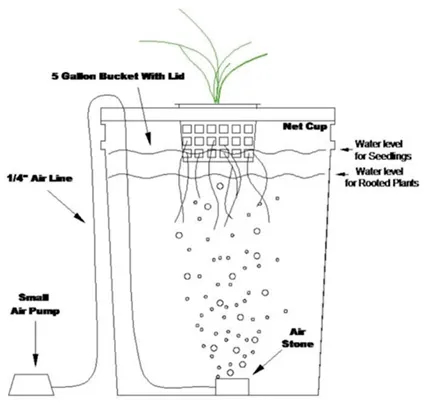Introduction
Setting up an indoor hydroponic garden offers a modern, efficient way to grow fresh vegetables, herbs, and greens year-round. Unlike traditional soil gardening, hydroponics uses nutrient-rich water solutions, allowing plants to thrive in limited spaces without soil. Whether you’re a beginner or an experienced gardener, indoor hydroponics can boost your harvest, save water, and reduce pests.
This guide will walk you through the essentials of setting up your own indoor hydroponic garden. We’ll cover choosing the right system, selecting plants, maintaining optimal conditions, and troubleshooting common issues. By the end, you’ll have the knowledge and confidence to start growing healthy, vibrant plants indoors.
Understanding Hydroponic Gardening
What Is Hydroponics?
Hydroponics is a method of growing plants without soil, using mineral nutrient solutions in water. Plants receive oxygen and nutrients directly through their roots, which promotes faster growth and higher yields compared to soil-based gardening.
Benefits of Indoor Hydroponic Gardens
- Space Efficiency: Perfect for apartments or places with limited outdoor space.
- Water Conservation: Uses up to 90% less water than traditional gardening.
- Faster Growth: Plants grow 25-50% faster due to optimized nutrient delivery.
- Reduced Pests and Diseases: Controlled environment limits exposure to soil-borne pests.
Choosing the Right Hydroponic System
Common Types of Indoor Hydroponic Systems
- Deep Water Culture (DWC): Plants’ roots suspend in oxygenated nutrient solution; ideal for leafy greens.
- Nutrient Film Technique (NFT): Thin film of nutrient solution flows over roots; good for small plants.
- Ebb and Flow (Flood and Drain): Periodically floods the grow tray, then drains; versatile for many crops.
- Drip System: Nutrient solution drips onto plant roots; suitable for larger plants.
Selecting Your System
Consider factors such as:
– Available space
– Budget
– Plant types you want to grow
– Maintenance level
For beginners, Deep Water Culture systems are often recommended due to their simplicity and low cost.
Setting Up Your Indoor Hydroponic Garden
Essential Components
- Grow Tray or Reservoir: Holds the nutrient solution.
- Water Pump and Air Pump: Circulate and oxygenate water.
- Growing Medium: Supports roots (e.g., rockwool, coco coir).
- Lighting: LED grow lights mimic sunlight; essential indoors.
- Nutrients: Balanced hydroponic fertilizers with macro and micronutrients.
- pH and EC Meters: Monitor water acidity and nutrient concentration.
Step-by-Step Setup
- Choose a location: A stable, temperature-controlled space with access to power.
- Assemble the system: Follow manufacturer instructions for your chosen hydroponic method.
- Fill the reservoir: Use clean water and add hydroponic nutrients.
- Adjust pH: Ideal range is 5.5 to 6.5 for most plants.
- Install grow lights: Position 12-18 inches above plants; provide 12-16 hours of light daily.
- Plant seedlings: Use starter plants or seeds in the growing medium.
- Monitor regularly: Check water levels, pH, and plant health daily.
Maintaining Optimal Growth Conditions
Light and Temperature
- Maintain temperatures between 65°F and 75°F.
- Use timers to ensure consistent light cycles.
Nutrient Management
- Replace nutrient solution every 1-2 weeks to prevent buildup.
- Monitor Electrical Conductivity (EC) to avoid over or underfeeding.
Air Circulation and Humidity
- Use fans to circulate air and prevent mold.
- Keep humidity around 50-70% depending on plant species.
Common Problems and Solutions
- Yellowing leaves: Could indicate nutrient deficiencies; test and adjust solution.
- Root rot: Ensure oxygenation and avoid water stagnation.
- Pests: Inspect plants regularly; use organic insecticides if needed.
Recommended Plants for Beginners
- Leafy Greens: Lettuce, spinach, kale — fast growers with shallow roots.
- Herbs: Basil, mint, cilantro — thrive indoors and are low maintenance.
- Strawberries: Require more care but are rewarding to grow hydroponically.
Conclusion
Setting up an indoor hydroponic garden is a rewarding project that combines science, sustainability, and fresh food production. By selecting the right system, maintaining careful nutrient and environmental controls, and choosing suitable plants, you can enjoy year-round harvests regardless of outdoor conditions.
Start small, monitor your garden closely, and expand as you gain confidence. Indoor hydroponics not only saves space and water but also empowers you with a deeper connection to the food you eat. Ready to grow your own indoor garden? Take the first step today and transform your living space into a vibrant, green oasis.
